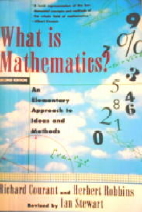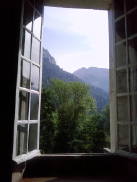Familiar mathematical structure is found in the neural activity that governs how the body orients itself and navigates its environment. Grid cells are neurons, found in areas neighboring the hippocampus, whose individual firings line up in a coordinate-like pattern according to an animal’s movement across the full extent of its environment. Their grid pattern acts […]
|
|||||
|
Not too long ago I wrote about entropy, and what has come to be known as Maxwell’s demon – a hypothetical creature, invented in 1871 by James Clark Maxwell. The creature was the product of a thought experiment meant to explore the possibility of violating the second law of thermodynamics using information to impede entropy […] A short article in the April 16 issue of New Scientist reported on an applied soft computing paper that proposes an improvement on what’s known as ‘particle swarm optimization (PSO). Particle swarm optimization (PSO) is an optimization technique inspired by the social behavior of birds. Described as a simple and powerful algorithm, it can be […] Much of the research done in cognitive science is designed to study the development of concepts – internal representations that define the idea-driven nature of modern human experience. And, in our experience, it’s difficult to mend the rift that’s been created between what we call thought and what we call reality. But a number of […] One of the reasons that the nature of mathematics has been such an enigma, is that we associate it with thought, and we tend to distinguish thought from the physical world. We do find mathematics in natural structures – some of these beautifully represented in a film you may have seen called Nature by the […] Things happen in nature. Cells socialize and build structure, organisms grow, and move, and interact, and then more things grow – like music, language, and mathematics. Generally, talk about evolution is very pragmatic. Cell organization, the shaping of roots, leaves, nourishment mechanisms, reproductive drives, are all usually understood as fairly specific purposeful processes. Perhaps by […] I have recently spent some time sorting out the points Arkady Plotnitsky makes about the significance of Riemann’s notion of manifold (or manifoldness) in his paper which appeared in the journal Configurations in 2009. The paper has the title Bernhard Riemann’s Conceptual Mathematics, and the Idea of Space. It is refreshing in that it considers […] In 2011, Science Daily reported on a study done at Queen Mary University of London and published in Biology Letters. The study examined the foraging strategies of bumblebees and found that “after extensive training (80 foraging bouts and at least 640 flower visits), bees reduced their flight distances and prioritized shortest possible routes.” The bees […] Given the arrival of the summer solstice and this post on the EarthSky website, I decided to write a little bit about what prehistoric monuments (like Stonehenge) suggest to me about some of the roots of mathematics. With a photograph to support the claim, the EarthSky post tells us: If you stood inside the Stonehenge […] Mathematics is usually thought of as a tool that quantifies things in our lives and there is good reason for this. Early in our experience, it is presented to us as a counting and measuring device, not as a way to see something. But this characterization of mathematics is misleading. Quantification alone would not get […] |
|||||
|
Copyright © 2025 Mathematics Rising - All Rights Reserved Powered by WordPress & Atahualpa |
|||||


Recent Comments